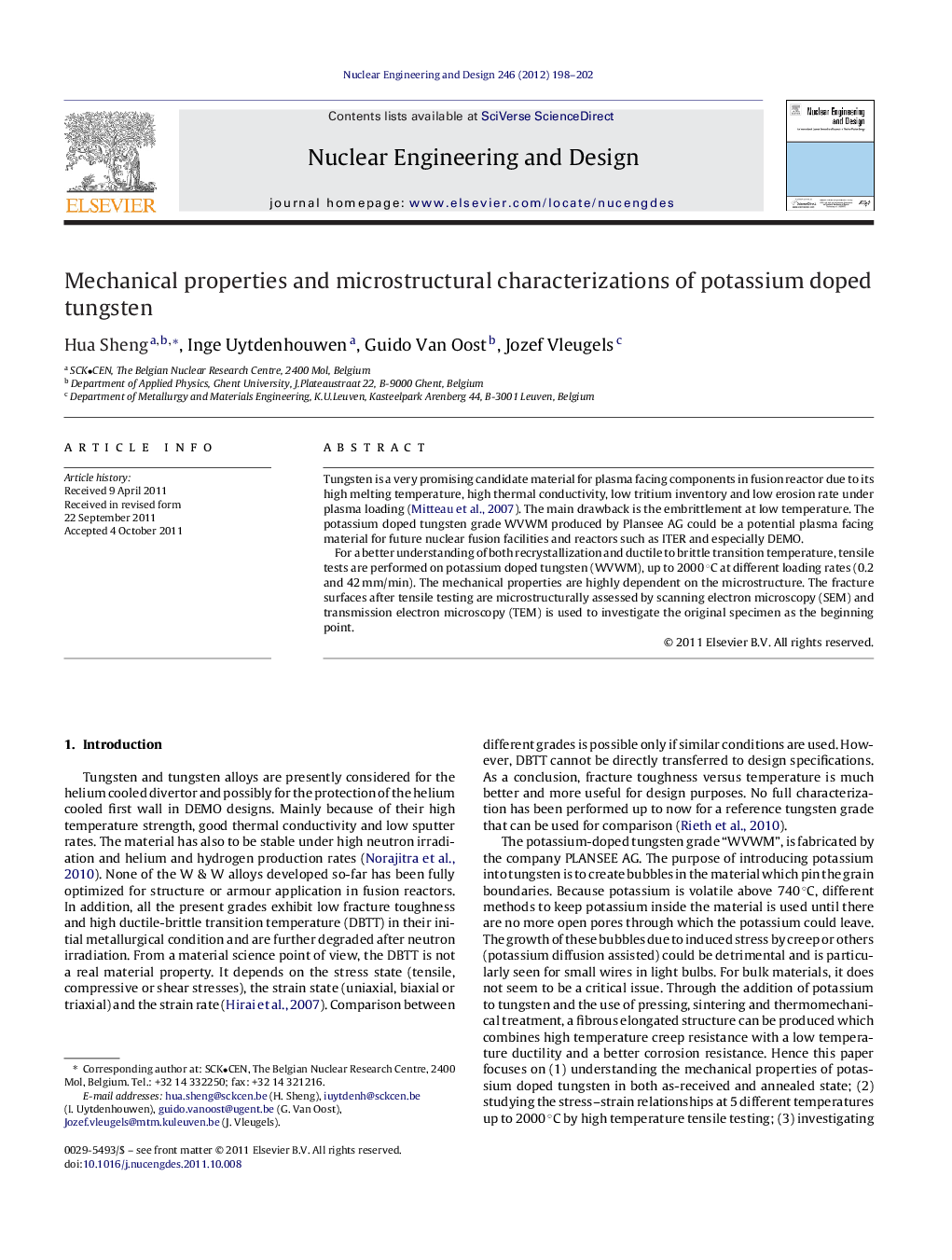| Article ID | Journal | Published Year | Pages | File Type |
|---|---|---|---|---|
| 297266 | Nuclear Engineering and Design | 2012 | 5 Pages |
Tungsten is a very promising candidate material for plasma facing components in fusion reactor due to its high melting temperature, high thermal conductivity, low tritium inventory and low erosion rate under plasma loading (Mitteau et al., 2007). The main drawback is the embrittlement at low temperature. The potassium doped tungsten grade WVWM produced by Plansee AG could be a potential plasma facing material for future nuclear fusion facilities and reactors such as ITER and especially DEMO.For a better understanding of both recrystallization and ductile to brittle transition temperature, tensile tests are performed on potassium doped tungsten (WVWM), up to 2000 °C at different loading rates (0.2 and 42 mm/min). The mechanical properties are highly dependent on the microstructure. The fracture surfaces after tensile testing are microstructurally assessed by scanning electron microscopy (SEM) and transmission electron microscopy (TEM) is used to investigate the original specimen as the beginning point.
► The potassium-doped tungsten grade “WVWM” was studied. ► Tensile testing was performed in the high temperature vacuum furnace at 5 different temperatures. ► Microstructural investigations were performed and the recrystallization temperature as well as related material modifications determined. ► The mechanical properties from the annealed material showed acceptable behaviour especially with respect to the ductility.
